How To Get A Job At Disney Animation
How to Get a Job in Animation at Walt Disney Studios
At WonderCon 2015, Disney recruiters give tips on how to country a job as an animator at Walt Disney Animation Studios and Disney Tv set Animation.
At WonderCon this weekend, I had a fun fourth dimension roofing the Walt Disney Animation Studios and Disney Television Animation: Careers at Disney Animation panel with Camille Eden (Managing director, Recruitment), Matt Roberts (Artistic Recruiter), and Brooke Keesling (Director, Talent Development) who shared some of the dissimilar creative roles that help make animated films and television shows. The give-and-take was moderated past Disney animator Darrin Butters, who worked on Big Hero 6 and Frozen , and offered a behind-the-scenes look at this amazing fine art class. The panel began with a brusk screening showcasing Disney Studios' most popular motion-picture show and television animation and ended with an audience Q&A.
The panelists talked virtually the different approaches of each studio; what it's similar working within a vertical studio where everything is done in-firm; the development process in the studio pipeline; the collaborative, fast-paced, and fun working environs; how art and engineering are combined; how everyone working at Disney contributes to the process; the importance of staying truthful to the vision of the entire organization; why they want applicants with a stiff sense of appeal, aesthetics, and storytelling; their training program and internship opportunities; what they look for in an applicant's portfolio; the all-time entry-level positions for recent college grads; and the importance of peer support and honest feedback.
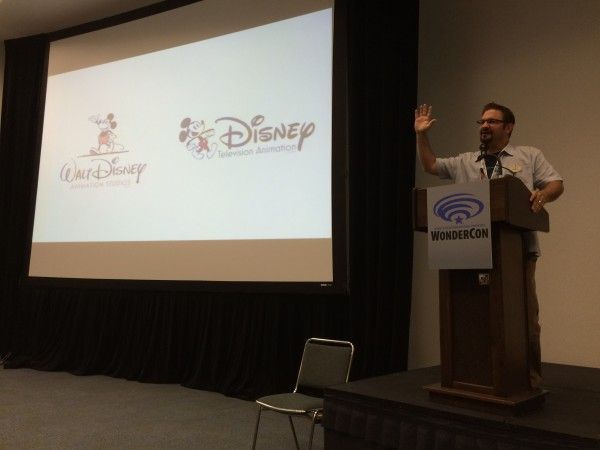
Here are xv important things to know if you're interested in pursuing a career in Animation at Walt Disney Studios:
- Disney Idiot box Animation is a fast-paced environment and usually has about 12 series in various stages of production at whatever given fourth dimension. They are creator-driven shows. New people who want to exist creators come up and pitch ideas. If approved, they brand pilots and DTVA decides which ones will be green lit to a new series. They also accept heritage properties that take ideas from existing property in the Disney legacy.
- At Disney Boob tube Animation, the evidence creators are at the helm and bring their vision to the tabular array, but they aren't necessarily the directors of their ain shows. Considering in that location are so many shows going on at whatever given fourth dimension, the show creator oversees all of that, but there will be dissimilar directors.
- Walt Disney Blitheness Studios is more than director driven. They make one film a year. They're currently working on their 55 thursday film, They also take a shorts programme and special projects. Their content is home grown and their writers are part of the studio. You have to be at director condition to pitch a film.
- Walt Disney Blitheness Studios has 3 important standards, which are to tell compelling stories, create believable worlds, and highly-seasoned characters. Everything begins and ends with story.
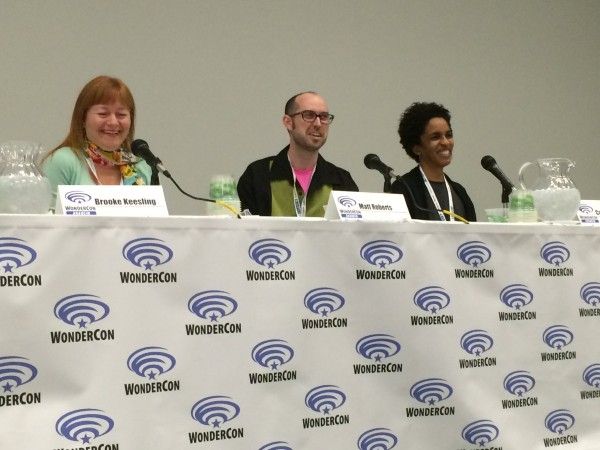
Photograph via Sheila Roberts - The filmmaking process is divided between fourteen departments in three big areas: development, element production, and shot production. They are a vertical studio meaning everything is done in-house. It's a very collaborative environment and their departments work together constantly throughout the procedure.
- At Disney Animation, fine art and engineering science are combined and work together. The studio has technology specialists who work for the entire pipeline.
- Walt Disney Animation Studios has a squad of visual evolution artists, whereas Disney Television Animation looks for very specific roles such as the art director, background designer, background painter and color stylist.
- Story artists at Walt Disney Animation Studio piece of work very roughly and gesturally because they're doing a lot of iterations of a lot of the aforementioned shots and scenes over and over as the movie develops. In Boob tube Animation, the story and revisions are tighter.
- Disney doesn't tend to rent a lot of writers for TV blitheness considering near of their shows are storyboard-driven and the storyboard artists are doing the writing.
- Working at Disney Animation is fun, fast-paced, and the artists get along really well and feed each other's creative juices. You lot become to work with your peers and acquire from each other. Everyone is there to make the best possible movie.
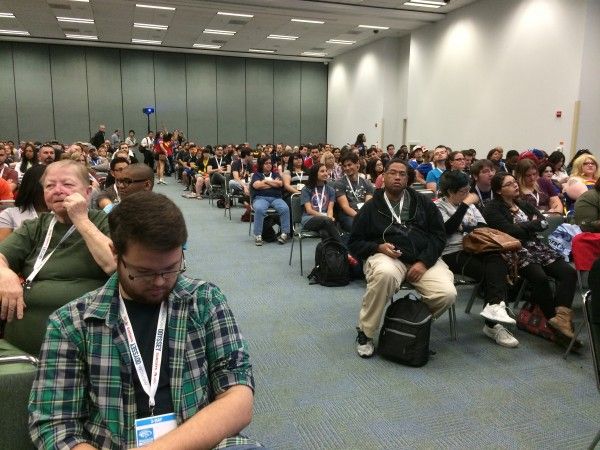
Photo via Sheila Roberts - If you're applying for an entry-level position, your portfolio should reveal your ability to tell a story such equally a student film, graphic novel or comic you've created. The studio is looking for strong draftsmanship, an ability to do a diversity of styles, and that yous are observing from life and non merely cartoon from other designs.
- A storyboard revisionist, who cleans up the storyboard drawings of a seasoned storyboard artist, is a skilful entry level chore. If Disney Idiot box Blitheness likes your storytelling ability, they'll send you a storyboard test to consider your potential.
- Walt Disney Animation Studios has a moving-picture show development preparation program for story artists which happens twice a year. The disciplines vary depending on the studios' needs. It's a 3-calendar month to i-twelvemonth-long paid mentorship where you're paired with a resident Disney artist. (Get to DTVATALENT@DISNEY.COM and DISNEYANIMATION.COM/CAREERS for more information)
- At a big studio similar Disney, yous tend to get hired for one specific thing. It's good to take one specialty, like a major that focuses on story, but then too have a pocket-size that focuses, for case, on character pattern. Versatility in both worlds makes yous more marketable to the industry in general.
- It'south a cool time to be trying to get into the animation industry considering you have the resources of the world at your fingertips today. Surround yourself with a potent grouping of artists who you respect that aren't necessarily just going to tell y'all what yous want to hear and are going to challenge you and give you honest feedback.
Check out a full transcript of the panel below.
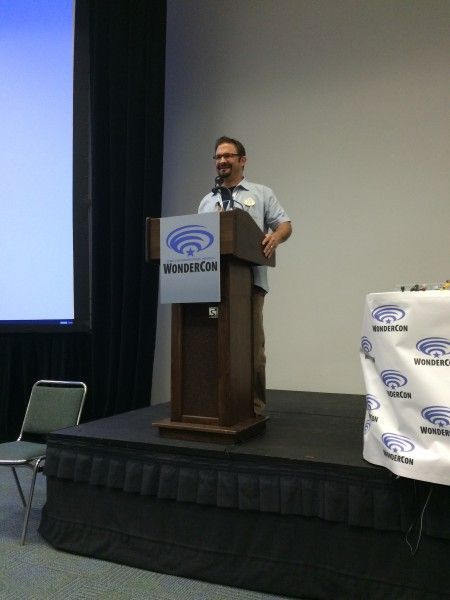
Moderator DARRIN BUTTERS: Let'southward commencement by introducing ourselves.
BROOKE KEESLING: I'm the Director of Blitheness Talent Development for Disney Television set Animation. TV is a actually fast-paced surround where we have usually about 12 series in various stages of product at whatsoever given time. Our primary thing is creator-driven shows. Gravity Falls was created by Alex Hirsch. He is the creator of that show. He's the person who brings the vision to the table. We've got Penn Aught and Star vs. the Forces of Evil. That's Daron Nefcy'south show. She brings the vision to the table for that show. We've got a few shows coming up including Hereafter-Worm! and Pickle and Peanut volition be coming out presently. They're really funny. Our master thing is our creator-driven shows, but then we also have heritage properties, which means we can take ideas from any existing holding in the Disney legacy, like the Mickey shorts. Paul Rudish is the person that's at the captain of the Mickey shorts. He's had a long career in animation. He took what anybody loves about Mickey and idea well-nigh how to freshen it up while staying true to who his character is. We have a very fast schedule. We're always making more than one episode at any given time. We as well are making pilots. So, we have new people who desire to be creators of our side by side properties and they come and they pitch ideas to us. And then, we make pilots and nosotros determine which 1 of those pilots nosotros want to green light to a new series. That's Disney TV Blitheness.
CAMILLE EDEN: I manage recruitment at Walt Disney Animation Studios. One of the ways that we're unlike from Television set Blitheness is that we make one moving picture a yr, and on height of that, we have a shorts program. Last yr's short, Feast, actually won the Academy Award. We have special projects likewise at the studios. All of that combined is some of the work that nosotros practise at Walt Disney Animation. Our content is dwelling grown. It'due south all original in the studio. Our writers are role of the studio at Walt Disney.
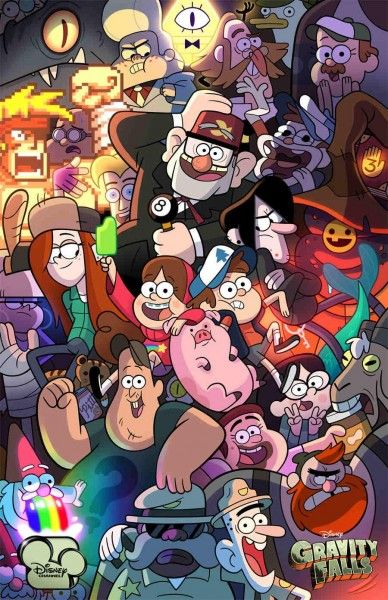
MATT ROBERTS: I handle all the forepart end artistic roles like animation, visual development, story and modeling. We are more than director driven, with the exception of our shorts program. If you're pitching a picture in our studio, you lot have to be at director condition. No matter who our director is or what the film is, nosotros try to concur any picture we make to three very important standards, which is to tell compelling stories, create conceivable worlds, and likewise create appealing characters. These are three truths that you should hopefully find in any film, whether it'southward a short, special projects, or a feature that comes from united states of america.
Can nosotros talk almost the differences in the creative roles of the studio?
ROBERTS: With Walt Disney Blitheness Studios, our filmmaking procedure is divvied upward between 14 departments which are in three big areas: evolution, element product, and shot product. I'll start with development. Nosotros're a vertical studio which is an obscure way of proverb everything is done in-house for the states. That'south from story all the way through lighting and editorial in the dorsum. Nosotros're a very collaborative environment. We're not really a linear pipeline where one section does something, then throws the work over the fence for the adjacent department to take care of information technology. We endeavour to work in more of a circular fashion where everyone is upfront trouble solving together to make sure that we're going to have a really clean, smooth pipeline and that anybody is in information technology together. Every bit far as creative roles within development, everything really begins with story. Story is actually beingness driven by the director, the head of story, and the screenwriter. But, in the story room, it's the iii of them working with entire story staff, which is all our artists working together to trouble solve and create the worlds, flesh out the characters, and make sure we accept a really entertaining movie. Also, we take a career path that I don't retrieve a lot of people know of, but nosotros've got a development team which usually has a background in writing. They work with the director upwards front, besides, to help him spell out the worlds and flesh out the story earlier they're green lit and go into product.
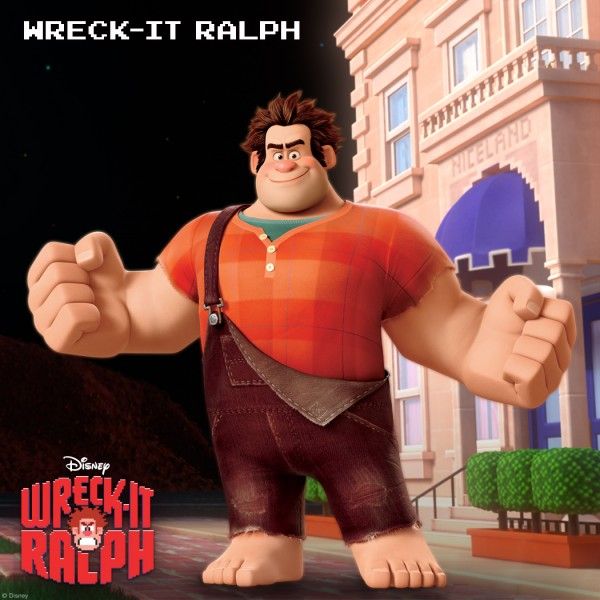
On summit of story in the forepart end, nosotros as well have visual development which are the artists that are doing all the pretty arts that you run across in the 'art of' books whenever a flick comes out. They're like dual ends. They get to do the really fun, exploratory stuff upward front, which is helping the director visualize ideas. Merely then, they as well have a real technical aspect to their job where they have to practise really technical paintings or cartoon turnarounds to spell out what the assets need to look similar further on in the CG production.
EDEN: Next up is asset production. That'due south where a lot of the characters and environments are created. And then, nosotros'll take modeling and rigging. It's a collaborative environment. These departments piece of work together constantly throughout the process and they team up. At some studios, you might have it where you lot handle an asset and then you hand information technology on to the adjacent grouping. At Walt Disney Animation Studios, our departments piece of work closely together throughout the entire picture. Then, one time they're worked through asset product, so they go into actual shot production where things come in similar effects and lighting, where y'all take the scene and yous lite information technology. It goes all the way through stereo. All of that happens in the back stop. Once more, that collaboration can go from the front terminate of the pipeline to the back and the dorsum to the front, but our teams are constantly working together. Another area which is unique to Disney Animation Studios is that the art and engineering are combined. Nosotros work constantly with our technology department and we also have technology specialists inside each bailiwick sometimes who work for the unabridged pipeline.
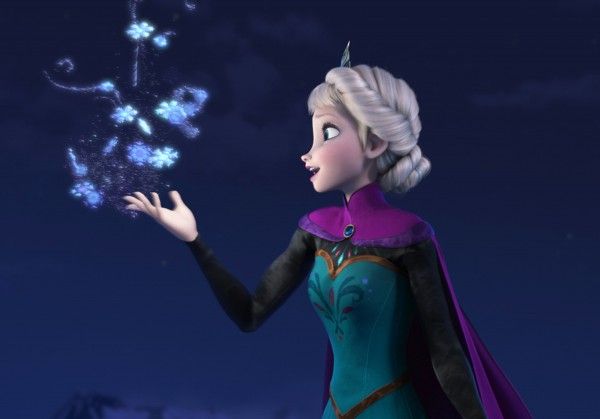
Nosotros too have editorial which works through and then there'southward production management. Production direction is from beginning to terminate. They really deport the film through and assist motion those shots along through the process. Then again, you'll see all the crossover, front and back. We really have to work together. Every bit the saying goes, it takes a village. We actually believe that everyone in the studio is a filmmaker because anybody is part of that process all throughout.
ROBERTS: Everyone gets notes on our films as we go through the diverse screenings and iterations.
BUTTERS: That'southward fun considering you lot go to tell the manager and the producer what you thought of the moving picture in the stage that it's in. You can say, "I don't empathise why this character would be motivated to do this," and you get to send that right to the meridian of the chain. And they mind. They read every single note. Information technology's amazing. Ane thing I would too like to point out is that you don't do the story and then move onto the animation. Story is working the entire motion-picture show.
ROBERTS: John Lasseter likes to employ this quondam phrase where we say that none of our films are ever completed. They're simply released. If you put the power into our artists' hands, they would just proceed reworking it to try to make things more than and more perfect. But it just gets to a point where you take to release it to the public and hopefully they will enjoy it.
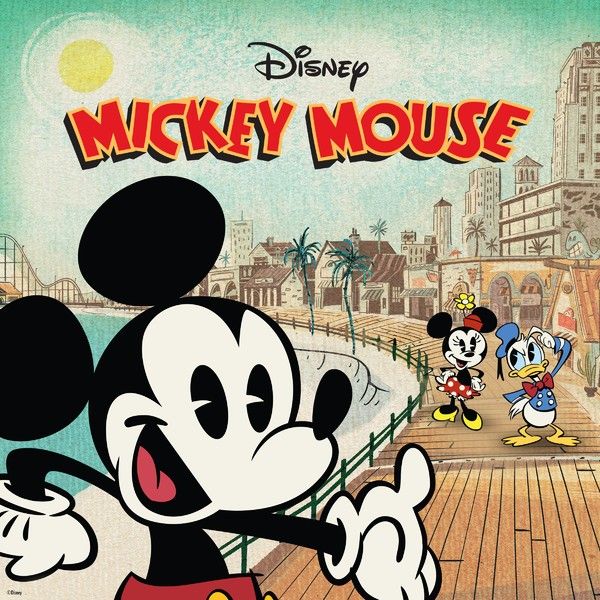
KEESLING: Creative roles for Disney Tv Blitheness are a piffling bit different. Equally a recruiter for our studio, I'll have lot of people sometimes applying to me saying, "Oh, I desire to do Vis-Dev, which is curt for visual development. That's a title that works more for yous guys. You have a squad of Vis-Dev artists. For television, Vis-Dev is broken down into all of the fiddling parts. Visual development would be the art managing director, background designer, background painter, and colour stylist. There'southward someone called a color stylist on every show. They choice all of the colors of everything that the background painter doesn't paint. And and then, we also have storyboard artists and storyboard revisionists. I like to tell younger people, students, that if they're interested in story that doing storyboard revisions is a good entry level chore into Disney Television Blitheness. So, all of those roles are the ones that work for usa. It's designers and storyboard people. Then, at the helm, is the prove creator and they're the ones that bring the vision to the table. The testify creators aren't necessarily the directors of their own shows, and that can be kind of confusing to people. There are so many shows going on at any given time. We've got one that they're still pitching the boards and it's still on the thumbnails. And then, we've got another i where the story is more fleshed out. So, the show creator oversees all of that, whereas at that place volition be different directors. Each crew might have two or iii directors that work on all the unlike episodes coming downwardly. It's actually fast paced, but it'south a lot of fun and there'due south a lot of layering that happens on each crew. Hopefully, that's clear for you. There are a lot of similarities with how we work and then there are subtle differences.
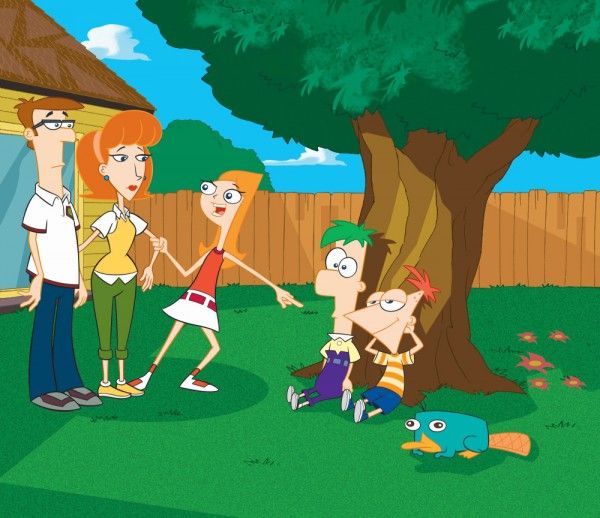
ROBERTS: Fifty-fifty stylistically when she's talking about story, for the story artists at our studio, we want you to work very roughly, very gesturally, because you're doing a lot of iterations of a lot of same shots and scenes over and over as the flick develops. So, we need you to work quickly but still with that actually strong sense of appeal, whereas in TV Animation, your story and revisions are a lot tighter.
KEESLING: Quick and dirty. They're super loose at first. They're little thumbnails on petty post-its sometimes. And then, equally they become happier with the story, then they'll get it into a tighter identify. What we are going towards is kind of a real tight final animatic which will then get to the animation department. One question that I oftentimes get is about writers. We don't tend to hire a ton of writers for Telly animation because most of our shows are storyboard-driven, which ways that the storyboard artists are also doing the writing. Nosotros accept some shows that are script-driven, but the majority of them are storyboard-driven.
What'southward it like to work at Disney Animation? KEESLING: It's super fast paced but it's really fun. It'south a great identify to work. The artists ever become forth actually well. We're always feeding each other's artistic juices. It'southward fast paced because there are so many episodes that need to be made, and the schedules for episodes aren't that long. So, on that level, if you like the faster-paced environment, it'southward definitely a place where you would thrive. Information technology'southward super fun, very team oriented.
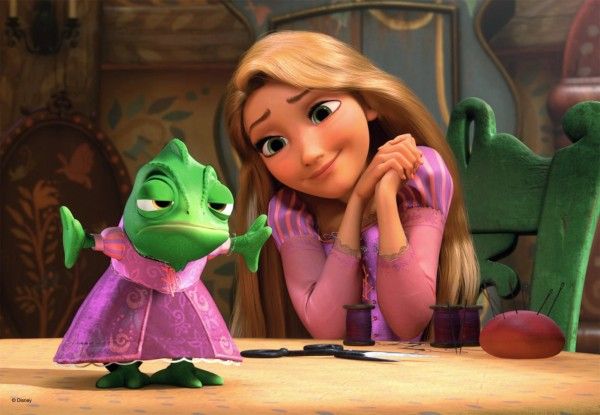
Every bit the head of recruiting in that location, if I know that ane person is going on hiatus from one bear witness, like if we've got a storyboard artist that's going off from Wander, I'll say, "Hey, Gravity Falls, practice yous guys need a storyboard artist correct now?" Nosotros try to keep our talent every bit much as possible and we're very successful with that. We're super supportive and nosotros all experience that we're honored to be a part of the Disney Studio, the Disney surround. We've got a legacy to concord up. We need to stay truthful to the vision of the entire organization and we practice our best to uphold that and accept fun with it. That'south office of the bargain of working for Disney. Plus we get to go to Disneyland, which we like. And then, in that location are many benefits to working at Disney. Information technology's a really fun, family unit-oriented, wonderful visitor.
EDEN: One of the parts of our culture is the legacy. We are currently on our 55thursday film, Zootopia, which we plan to release in Spring of adjacent twelvemonth. I'one thousand actually excited about that. We keep maxim collaboration but it is true. It is a highly collaborative environment. Information technology's just role of the key. One special affair that is astonishing about the studio is that you exercise go to work with your peers and we learn from each other. We share. It's a constant in everything that we practice. It is fun to work at Disney.
ROBERTS: What I really like about our studio is that there is very little ego. Anybody is there to make the all-time possible movie that they can. We're very, very proud of the success of Frozen and Big Hero 6, but we basically celebrate for a week, and then it'southward like we accept to make Zootopia every bit practiced equally possible. So, it's like jumping back into the pipage to make sure that nosotros are doing everything we can to work together to give audiences a actually slap-up film.
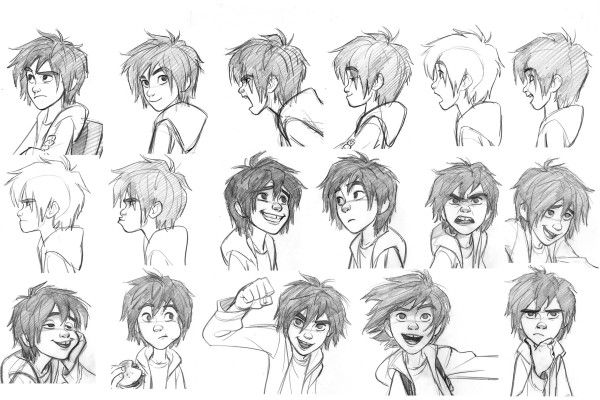
More and more than, it'south art and technology working together. It'south similar both sides are inspiring each other these days, where technology says, "What tin we exercise to really make our art shine in the CG realm?" At the same time, our artists are becoming more and more comfy coming to our engineers proverb, "This is an idea nosotros have. Is there whatsoever way we can build a tool to brand this easier for upcoming films?" With every film, we're trying not to repeat ourselves. We really want to give audiences a unlike experience. We really want to push button the fine art form and our filmmaking with each horse out of the gate. We're doing everything nosotros can to go along yous entertained. Nosotros appreciate yous coming out to see our film.
BUTTERS: And just the fact that they're restructuring our edifice right at present. Nosotros have new construction and it'due south all geared toward making us more collaborative, making it easier for us to be collaborative, and that's exciting. Wherever you guys piece of work, talk them into getting you a cereal bar. There are dispensers of cereal and y'all can walk down with a bowl and make full it up. They have a fridge with every type of milk you can call up of. That's all frosting on the cake.
ROBERTS: We have bagel Fridays where they have bagels out for everybody Friday morning. We accept fresh fruits.
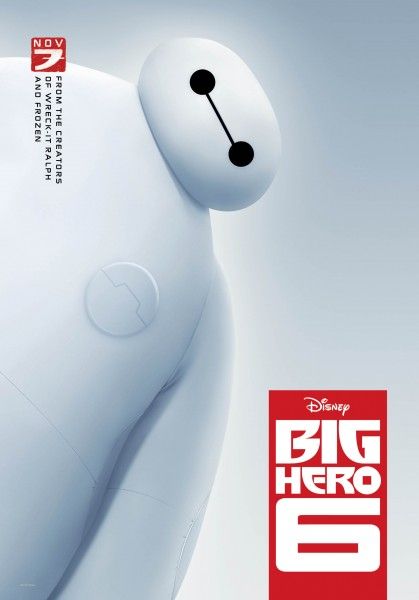
KEESLING: We have John Lasseter's manus-chosen chef at our commissary. It's for existent.
ROBERTS: Our cereal is name make. We're General Mills all the way.
BUTTERS: Let's open this up to the audition for Q&A. How do you work with other departments such as marketing or product merchandising?
EDEN: Marketing is part of Walt Disney Animation Studios. Equally Matt said, nosotros're a vertical studio so we take our own marketing department and our own finance section. They're all at the studio with u.s.. They work with a larger company, simply once again they're part of that pipeline through the process. They're there from the offset all the manner through and beyond when the film is released.
ROBERTS: We too have a pretty newer function that's like an ambassador to our other divisions. When we have consumer products and stuff coming out for our films or tie-ins to the theme parks, we have someone who works equally a representative from our studio who goes to those divisions to oversee the quality of the trade that's going to exist tied to a film or any kind of theme that'south going to be representing it. We want to make sure nosotros have consistent creative quality representing our films.
Are you planning on bringing any of the series that are on Television set right now into a feature-length flick?
ROBERTS: Unfortunately, we don't know. Where our artistic civilization is right at present, our directors pitch original ideas within our studio. I think we're very admirable in what each studio is doing.
KEESLING: The contrary is happening more right now. There are some things that I tin can't talk about, but some things that they did earlier the states that now they might exist taking a step.
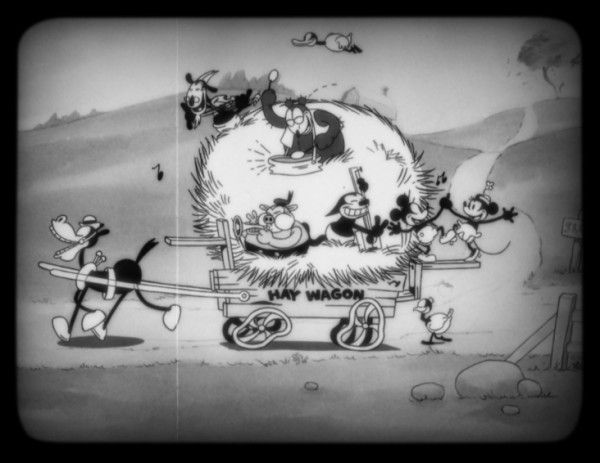
ROBERTS: The funny thing is, with the Mickey shorts, we did the Get a Horse curt at the same time Paul Ruddish was doing the Mickey shorts for them. Information technology wasn't supposed to be a necktie-in. It was just a coincidence. And so, as each film was getting done, I think the creators were getting together and saying, "Oh, what are you lot doing?" and there was this mutual admiration betwixt the directors that thought it was so cool that y'all guys are taking Mickey in this way.
What are some entry-level story positions that a recent college graduate could apply for? What would you recommend for somebody who wants to get into story evolution and eventually tell stories with the Disney family unit?
KEESLING: For Telly Blitheness, one thing that I look for in portfolios is I like to see people'southward student films. If yous go to a school that doesn't make you make a movie, then make yourself make a picture show, considering nosotros like to see your ability to tell a story. I also look at graphic novels and comics, so that's something that I look for in portfolios. An entry-level job would be a storyboard revisionist, which is a person that cleans up the storyboard drawings that a seasoned storyboard artist would have drawn. Applying for revisionist positions is a skillful way to go. We will send out tests. If nosotros're looking for a storyboard creative person on a show or a storyboard revisionist, we can send out a storyboard examination to you lot. You accept to get your portfolio canonical offset because we don't desire to send out a examination willy nilly to hundreds of people. Just if they see a blink of what they're looking for in their show, we'll send you a examination, so you transport it dorsum, and you lot might exist the person who gets the task.
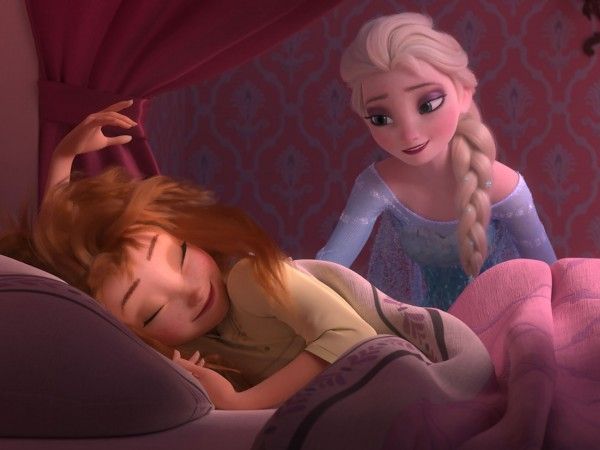
ROBERTS: For our studio, we actually have a film evolution training program for story artists. We don't similar to throw recent grads onto a film straightaway because it's very stressful on someone who's never worked on a film earlier. Our trainee program happens twice a year. The disciplines vary because nosotros effort to conceptualize what needs we're going to take down the line and then we're actually hoping to fix yous upwardly for a job. Information technology'due south from three months to a 1-year-long paid mentorship where you're really paired with a resident Disney artist who'due south going to mentor you and show yous the ropes and endeavor to nurture your skills through that time to try to get you ready to work on a picture show. It'south supposed to be for grad students. It's designed for artists who are 0-3 years out of university, so that is actually the framework. Nosotros desire you to be more on the inferior side considering we want to run into the potential in you and we desire to try to grow that into how our studio makes films.
How often does a position for a concept artist come up for television receiver animation?
KEESLING: It'southward hard to say how oftentimes. We're non on any strict schedule of seasons. Live action is like pilot season. We're year circular. We're light-green lighting things as they go fresh and prepare to green light. And then, I can't say how oft. Like I said earlier, we don't use a concept artist. We don't await for a Vis-Dev artist. We wait for the very specific roles. So, I look for background painters. I wait for grapheme designs. We love to see really potent draftsmanship and we like to see that you can do a variety of styles because our shows all wait dissimilar from each other.
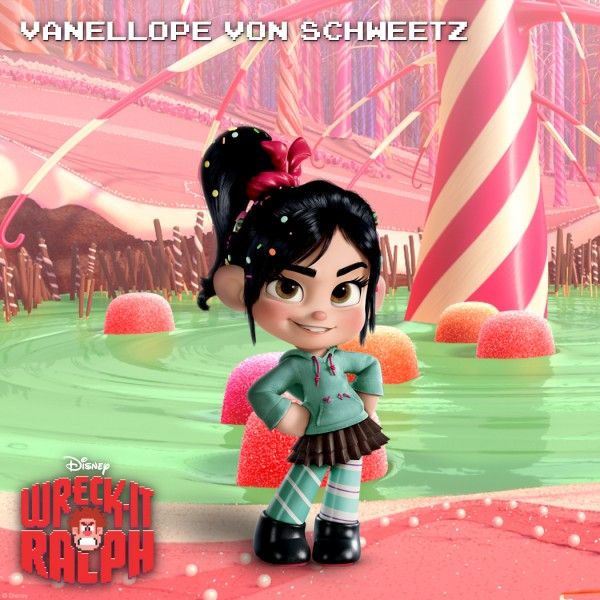
The way my schoolhouse'southward program is prepare, I have to brand a option betwixt TV, film, art and writing, but I want to practise it all. Which way should I go?
KEESLING: You've got your whole life ahead of you lot. Don't allow the downward pressure of the man, beingness your schoolhouse, make you decide today. Don't let them freak you out. Pick one and try it, and if that isn't the exact thing, just realize yous don't accept to larn everything yous demand to know in school. Yous're going to learn and then much once you get out and y'all're working. And then, pick the thing that seems the closest to what you remember you want to do. And if y'all alter your mind, you tin change your listen. Information technology's a free country.
ROBERTS: When you go hired to a bigger studio similar us or Telly Animation, you tend to be getting hired for one specific thing. It's not similar you're going to float everywhere, just having said that, I think it's good to have ane specialty, like accept a major, but then peradventure have a minor. So if story is what you lot want to practice, similar really put a lot of focus on story. But if you lot're besides interested in graphic symbol design or something, I'd notwithstanding say to develop those chops too, considering if you lot have that versatility in both worlds, or even more worlds than that, I think you're making yourself more than marketable to the industry in general.
KEESLING: Endeavor to become an internship while you're in school, because when you're a educatee and you're working in a studio, you lot'll starting time to see, "Oh, I thought I wanted to practice this, simply really I want to practice that."
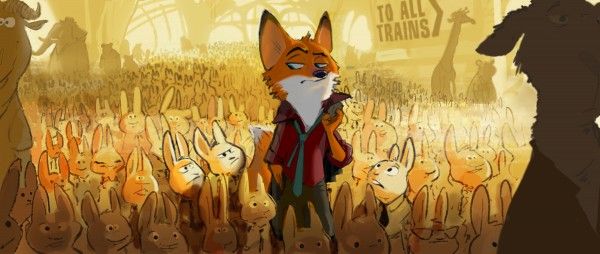
ROBERTS: Also, when you lot are applying, you practice want your portfolio to be as specific as possible, because if you have too many different disciplines all in one submission, it'south going to confuse, unless yous're awesome in all of them.
EDEN: When yous kickoff to go for internships, or once you graduate, know the culture of the place that yous're applying to. Make sure that your portfolio is reflective of that. If you lot're going for television or feature animation or commercial, make certain that your portfolio reflects that.
KEESLING: I would say get your presence known. Mail to your Tumblr constantly. I am constantly looking on Tumblr what people are posting. Get your stuff out there. Making student films, for boob tube, that helps us. (To Matt) I don't know if you guys look at it that much. That's something that I look at a lot.
ROBERTS: We totally practise. I think information technology's a really cool fourth dimension to be trying to go into the blitheness industry because you lot have the resources of the world at your fingertips today. Information technology'south non only that you have a multitude of studios out there, simply at that place's always 'art of' books coming out. And then many industry professionals have their own Tumblrs or blogs or Instagrams. You can reach out and connect with artists. And if they feel comfy and take the permission from the studios to practice so, they tin actually requite you feedback on your work. You have so many benchmarks out there to make connections and go advice. I'd besides say, whether you're however in school or coming together people online, really surround yourself with a stiff grouping of artists who you respect that aren't necessarily but going to tell you what you lot want to hear and that are going to challenge you and give you honest feedback. If you're just at home working by yourself, you're kind of working in a vacuum. Yous could be making all the aforementioned mistakes over and over again. When you are with people that are going to challenge and back up you, you lot have someone to bounciness ideas off of and y'all're going to grow. I was a decent artist when I was in community college. The second I went to Cal State Fullerton and I was in that artistic community, I felt all of my skills just bumped up similar they didn't before because I'm in a community that is here to make me succeed.
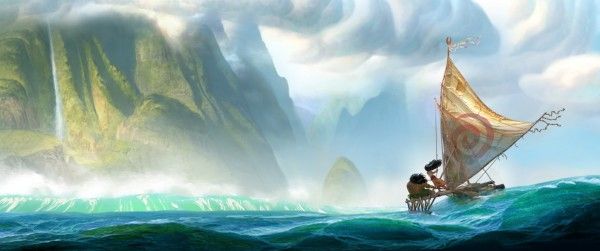
EDEN: It goes back to what we were proverb earlier about a collaborative environs. Even though you've got seasoned people at our studio, they yet will bounce ideas around. You think you're done, but then yous go in and you share it with a grouping, and they might tear it autonomously and put it back together until you lot find that character or that piece of art. So, information technology's not just for students. It's all throughout your career.
KEESLING: Ane other thing I'd say is be overnice to each other in school, because if you stay in animation, yous're going to exist working together for years and years and years. I don't actually love the word 'networking' because it sounds like making fake friends that yous're going to apply for various things. But start building your 18-carat network. Help each other on your projects and join organizations. Women in Animation is i. They practise mixers every calendar month and you can start meeting people. Go to WonderCon and all these things like volunteering at the Amy Awards. In that location are different means of starting to meet the people that y'all're going to be working with. BUTTERS: Hither's a huge tip in life, too. Exist honest. Seek people who are honest to tell you whether this is terrible, or this is neat, or this needs piece of work on. Don't give false support so that somebody is focusing their efforts on something that is a waste of their time. Sam Harris has a great mini-book chosen Lying and information technology'due south all most this thing about non keeping people from reality. If you see somebody and they ask your opinion on a piece of piece of work, tell them what you honestly think about it and what they honestly demand to work on. Don't prove your mom. She's going to honey you lot no matter what.
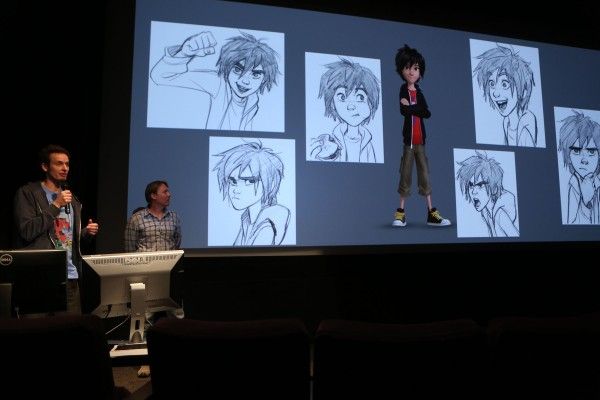
What portion of our portfolio should be life cartoon, specially for people applying for positions in visual development, background, or story?
ROBERTS: For us, I e'er say do two or iii pages at the dorsum. You don't need to put that much, merely we exercise desire to run into your fundamentals. If yous're a painter, we'd also like to encounter some of your paintings and studies on top of your actual more than creative animation-driven piece of work. Animate being drawing is good. For those interested in story, information technology's also good to come across your observational sketches. Simply we do desire to know that you lot are observing from life and it'southward non just cartoon from other designs. We desire some kind of truth and authenticity behind anything that you build. Research and going out there and studying the world and people is actually an of import part of that.
EDEN: I simply demand to see enough to know that you lot empathise book and shape and proportion. Nosotros don't demand a ton. I tin can see that in a portfolio that has no life cartoon if the character designs are really strong, only information technology doesn't hurt to have some in there. It only doesn't need to be a large aggregation.
I'm an animation student and I'm wondering what you await for in an intern?
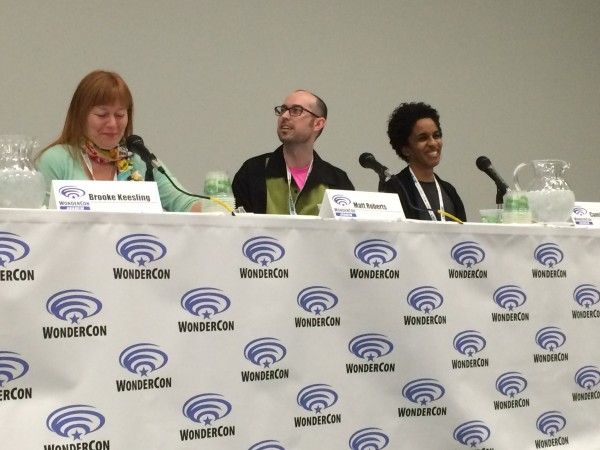
KEESLING: For the states, nosotros await at the portfolios. Nosotros really similar to read the cover letters and hear most the passion that you have. Knowing that yous know what our studio does is important. Sometimes you tin can tell that someone has just practical to every internship under the lord's day and they transport you kind of a course letter that they've sent to every studio. We're definitely non looking for that, but for force in your portfolio. Sometimes if people send me a link to their Tumblr and they oasis't updated it in a long time, I'm similar, "Are they drawing a lot?" If I take to pick between two people and I run into someone ever calculation stuff to theirs... I know you lot're in school and yous have a lot to do but… If it'south Behance (online portfolio site) or Artimated, it doesn't really affair. I was merely using Tumblr as kind of a catch-all. That's the i I seem to be seeing the most lately. Information technology'south seeing that you lot are so engaged and that you consume, sleep, live, and breathe drawing and animation. And comics in your personal work, also. Not just things that y'all think are going to go you the job. Nosotros desire to encounter your vision because you might be the next show creator for u.s.a..
ROBERTS: If you want to apply for a job, it's better to have a separate Tumblr that'due south your portfolio, rather than submitting your personal Tumblr. I want to see your art, but I don't think I should be knowing this part well-nigh what'due south happening in your life. Just accept something dissever from that. For us, we really accept artistic internships every summertime that's meant for people who are still in school and will be going back to school again in the autumn. We tend to just do writing internships. We await for what nosotros look like in a pro, simply more at a pupil level. We still desire you to take a really strong sense of appeal and aesthetic and storytelling in anything you do, but we're looking more for potential. We know that an internship isn't going to immediately lead to a job. We but want to see if this person can do good from learning under our artists for eight weeks. It's the same calibration, merely just practice your best and show us your absolute strongest work.
I accept friends who use Toon Nail animation software to do artwork and storyboard. If I'm interested in a storyboard chore, do I need to have those specific skills when I try to apply?
KEESLING: For united states, you don't. If we like your storytelling ability, like if we sent you lot a storyboard test and we thought this person nailed it and is swell usa upwardly, you could come in the studio and we could teach y'all about it. The ability to tell a story actually well and clear and take all the elements that need to be in that working is more important. The technology part tin come later.
ROBERTS: It'south more important to main the fundamentals and the concept of entreatment and so work on the tools from there. I remember it will make you more than marketable if you lot know certain programs. For us, we take proprietary plug-ins, but nigh of our software is off the shelf. If you're visual on the story, you're unremarkably only using photoshop in our studio. In something like for visual development, we only support the artist'due south process. So, there are some people who notwithstanding use more traditional media and and so they tin can scan all the artwork later. But, information technology's about your work first and tools second, because tools are always going to change. Software is not going to stay the same over the course of even five to 10 years now.
KEESLING: Storytelling is ages old.
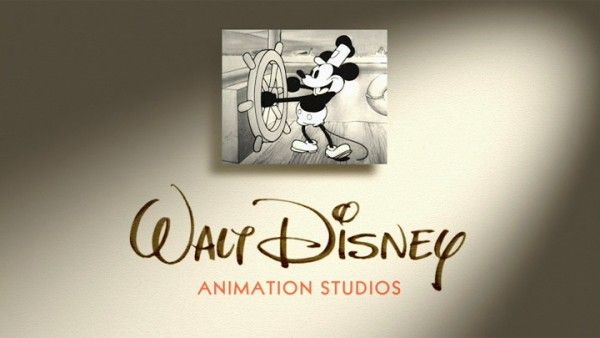
Source: https://collider.com/how-to-get-a-job-in-animation-at-walt-disney-studios/
Posted by: labarberanexce2001.blogspot.com

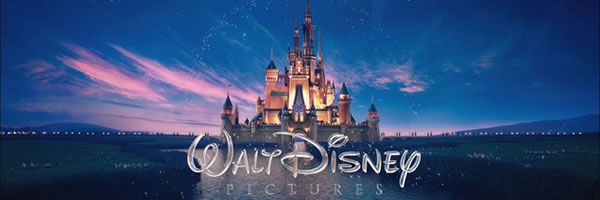
0 Response to "How To Get A Job At Disney Animation"
Post a Comment